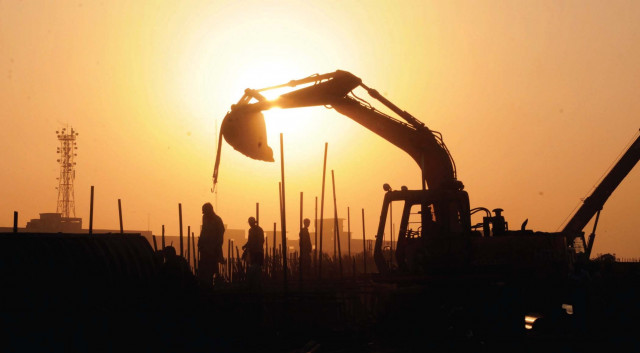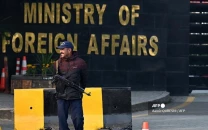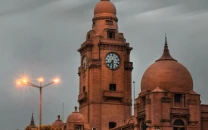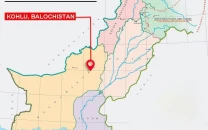Rewriting the equation: Building a new economy, one city at a time
An economic argument can be made for the development of private sector-led projects for new urban centres.

The government should strategically provide free land to consortia of participating developers, who should be made responsible for all aspects of developing the new cities. PHOTO: EXPRESS/ FILE
In the current economic environment and in the wake of stagflation in Pakistan, there is a definite need for spurring economic growth and sustaining it for a sufficiently long period.
There are some economic commentators who are suggesting that the new government should seriously look into the New Growth Framework (NGF) for Pakistan, developed by the Planning Commission under the previous PPP-led regime.
One major focus of the NGF is the development and uplift of existing cities. This article does not comment on the NGF; however, it does suggest something consistent with it to help spur economic activity. The suggestion is to develop a new national capital and new provincial capitals for existing provinces and the new provinces expected to be created out of Punjab.
Cities and towns in Pakistan have expanded in three broad ways: unplanned, quasi-planned and planned. Examples of unplanned expansion are the mushrooming slums around big cities like Karachi and Lahore. Quasi-planned developments are those areas developed by the private sector, but without proper local government help and support. The local government, however, plays a regulatory role. Examples of planned expansion are those “towns” and “cities” that are by and large developed by private real estate groups. The Defence Housing Authorities in Karachi, Lahore and Islamabad, and Bahria Town are some good examples in this category.
It is proposed that the new capital of Pakistan be developed on the junction of the provinces of Punjab, Khyber Pakhtunkha and Baluchistan, closer to the Sindh border. In terms of logistic ease, this will be more accessible to the country as compared to the current capital, which does not provide easy access to even those living in southern Punjab. The provinces of Sindh and Baluchistan are most disadvantaged in terms of access to the national capital. Provincial capitals should also be developed in relatively less-developed areas of the provinces, and not merely on the outskirts of existing capitals.
Given the budget deficit facing the new government, it will be imprudent to suggest that national or provincial governments finance the building of new cities. Rather, it should be a purely private phenomenon. The government should strategically provide free land to consortia of participating developers, who should be made responsible for all aspects of developing the new cities – including amenities and infrastructure like roads, parks, community centres, educational institutions, hospitals and other social services.
The government can retain certain strategic tracts of land in its own ownership to either develop them later or sell for prices that are expected to be a multiple of the current value of land when the new cities are reasonably developed.
These “private” cities should have minimum government intervention. The government should be responsible only for regulation and ensuring that the judicial system works to the advantage of the local communities. In this way, it will spend less, but generate a lot of revenues in the form of taxes that are proposed to be less than rates applicable in other parts of the country. A bulk of the taxes (which should be collected by local governments in the proposed cities) will be in the form of compulsory social contributions by households and businesses located in these new cities. Income and corporate taxes, however, should remain the prerogative of the federal/provincial governments.
Building new cities has major implications for economic development. The biggest short-term advantage of building new cities is in the form of spurring economic activity, which will generate employment and income opportunities for thousands of individuals and businesses. Although economic recovery in the country needs a comprehensive approach, it is not unreasonable to claim that a push by the real estate sector has the potential of putting the economy on the right track.
At the end, it must be clarified again that building of the new cities makes sense only if it is strictly done through the private sector. At this point in time, even public-private partnership programmes will prove to be unattractive for the cash-starved economy of Pakistan.
The writer is an economist and a PhD. from Cambridge University.
The case for developing planned cities
Islamabad was started in the 1960s as a new capital when the government of president Ayub Khan decided to shift the capital from the southern port city of Karachi to a more central area (within what was then known as West Pakistan). Since then, only one planned city has been added – Gwadar – which remains under construction and has a minuscule current population of about 85,000.
Prior to the construction of Islamabad, Jauharabad was founded in 1953 as a capital of the Khoshab district. Apart from these few examples of creation of new cities, there has been no systematic attempt to help the country urbanise through the creation of planned cities.
In other countries, notably Malaysia, a number of planned cities (including the newly built federal capital – Putrajaya) have been built to upgrade urban living. The city of Shah Alam, capital of the state of Selangor, is another good example of a planned city. A huge project – Iskandar Malaysia – also includes a new planned capital (Nusajaya) for the state of Johor. All these are being used to sustain economic development in a country that aims to achieve the status of a high-income economy by 2020.
The benefits of new urban centres
Apart from costing a minimum to the government, there are numerous benefits of building new cities:
1. Five or seven new state-of-the-art cities will release a lot of pressure from existing large cities, as it is expected that a number of families will migrate from cities like Karachi, Lahore, Islamabad, Peshawar and Quetta to the new cities. Also, many of those migrating from rural to urban areas will decide in favour of new cities rather than going to economically-stressed existing ones. This will allow the federal and provincial governments to focus on developmental work in existing large cities, with an aim to bring them on par with other respectable cities of the world.
2. As the new cities will use state-of-the-art technology and designs, they will be hugely helpful in modernising lifestyles in Pakistan. People around the world talk about Dubai as an example of a modern city, offering superior lifestyle and economic opportunities. The proposed new cities must be developed with the same intent.
3. As private projects, these cities are expected to bring in a lot of foreign direct investment in Pakistan, which is desperately needed. Neighbouring Arab countries, where investors have a huge appetite for real estate, building new cities will offer attractive opportunities to these savvy investors. Furthermore, there are numerous local real estate developers who would be interested in playing their role in the proposed projects.
4. The new cities will require development of logistic infrastructure (new roads, rail tracks, airport etc), which will generate huge employment opportunities for the local labour force, especially the youth.
5. Apart from the economic benefits, the proposed new national capital will be seen as a good political gesture by the new government. It will create confidence and trust with its geopolitical proximity to all provinces, especially amongst the people of Balochistan, who have not been treated particularly well in the recent past.
Published in The Express Tribune, June 10th, 2013.
Like Business on Facebook to stay informed and join in the conversation.

















COMMENTS
Comments are moderated and generally will be posted if they are on-topic and not abusive.
For more information, please see our Comments FAQ